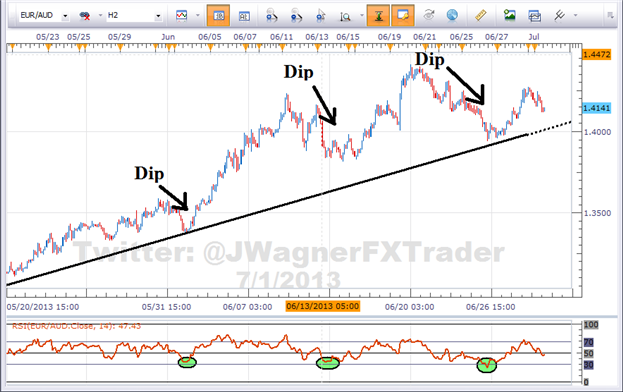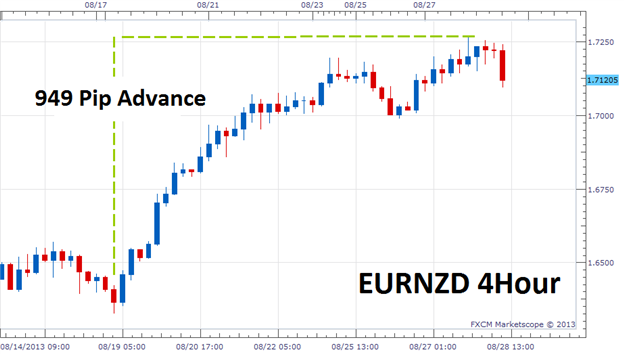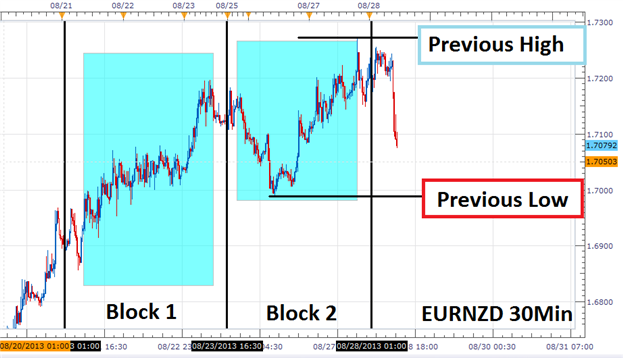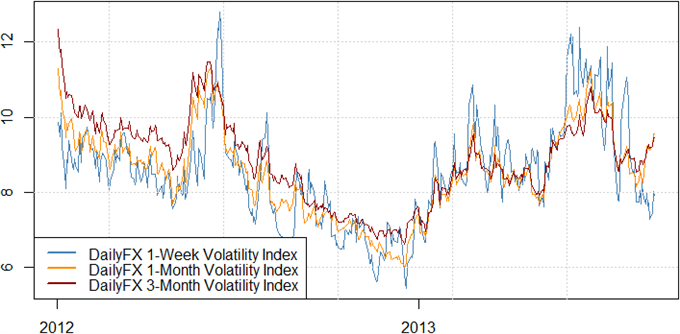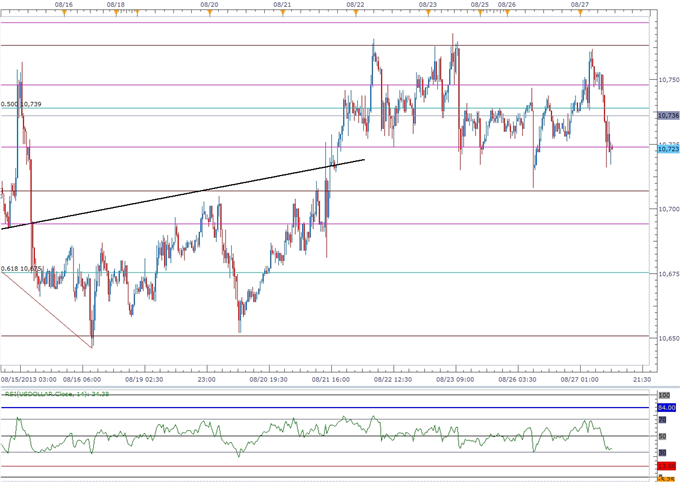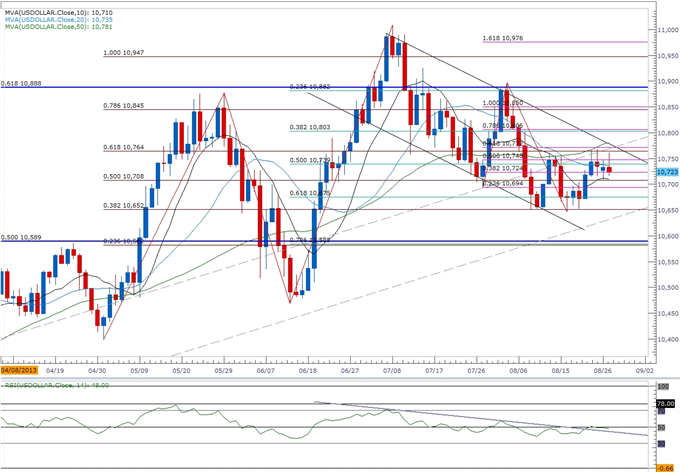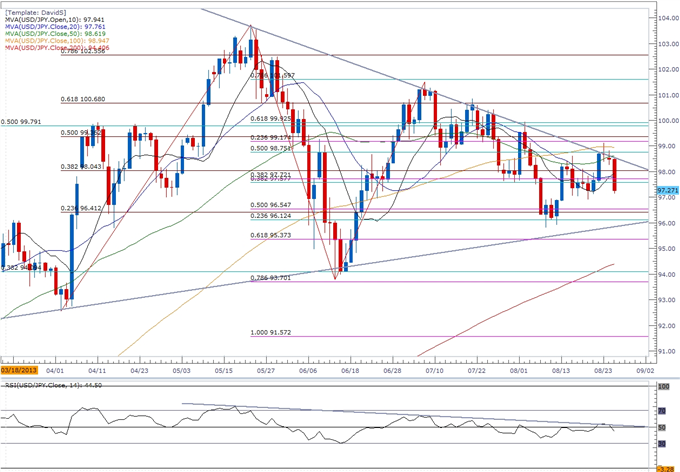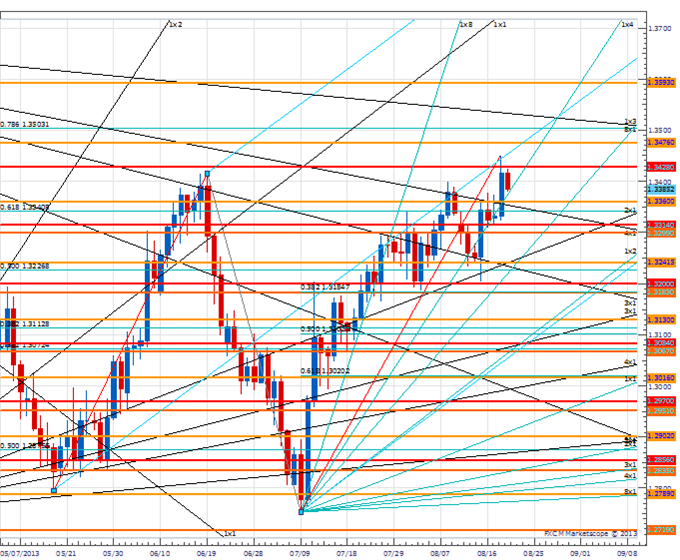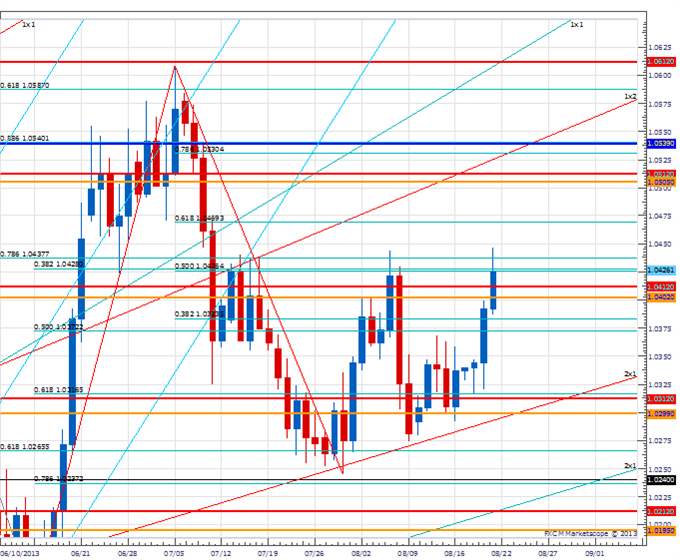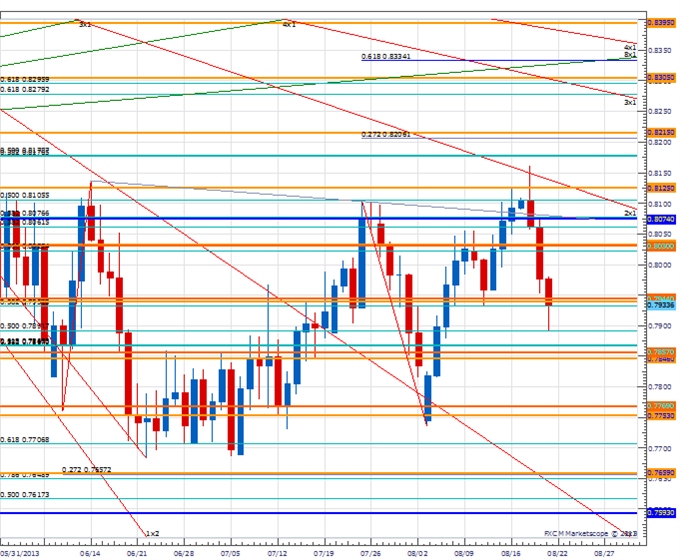Trading the News: Canada Gross Domestic Product
The slowing recovery in Canada may prompt a further selloff in the Canadian dollar as it dampens the Bank of Canada’s (BoC) scope to normalize monetary policy.
What’s Expected:
Time of release: 08/30/2012 12:30 GMT, 8:30 EDT
Expected: 1.6%
Previous: 2.5%
DailyFX Forecast: 1.2% to 1.8%
Why Is This Event Important:
Indeed, concerns of a more pronounced slowdown in the real economy may push BoC Governor Stephen Poloz to adopt a more dovish tone for monetary policy, and the central bank may retain its currency policy for an extended period of time in an effort to address the downside risks surrounding the region.
Expectations: Bearish Argument/Scenario
Release
|
Expected
|
Actual
|
Retail Sales (MoM) (JUN)
|
-0.4%
|
-0.6%
|
Wholesale Trade Sales (MoM) (JUN)
|
-0.5%
|
-2.8%
|
Net Change in Employment (JUL)
|
10.0K
|
-39.4K
|
The ongoing weakness in the labor market along with the slowdown in private sector consumption may produce a dismal GDP report, and the Canadian dollar may face additional headwinds over the remainder of the year should the data curb expectations for a BoC rate hike.
Risk: Bullish Argument/Scenario
Release
|
Expected
|
Actual
|
Existing Home Sales (MoM) (JUL)
|
--
|
0.2%
|
Housing Start (JUL)
|
190.0K
|
192.9K
|
New Housing Price Index (MoM) (JUN)
|
0.1%
|
0.2%
|
Nevertheless, the strength in the housing market may help to limit the scope of seeing a marked slowdown in the exchange rate, and a positive print may foster a near-term correction in the USDCAD as it raises the fundamental outlook for the Canadian dollar.
How To Trade This Event Risk(Video)
Bearish CAD Trade: 2Q GDP slows to 1.6% or lower
- Need green, five-minute candle following the release to consider buy entry on USDCAD
- If the reaction favors a long trade, enter with two position
- Place stop at the near-by swing low/reasonable distance from cost; at least 1:1 risk-to-reward
- Shift stop to entry on remaining position once initial target is hit, set reasonable limit
Bullish CAD Trade: Growth rate tops forecast
- Need red, five-minute candle to look at a short USDCAD trade
- Implement the same strategy as the bearish CAD trade, just in reverse
Potential Price Targets For The Release
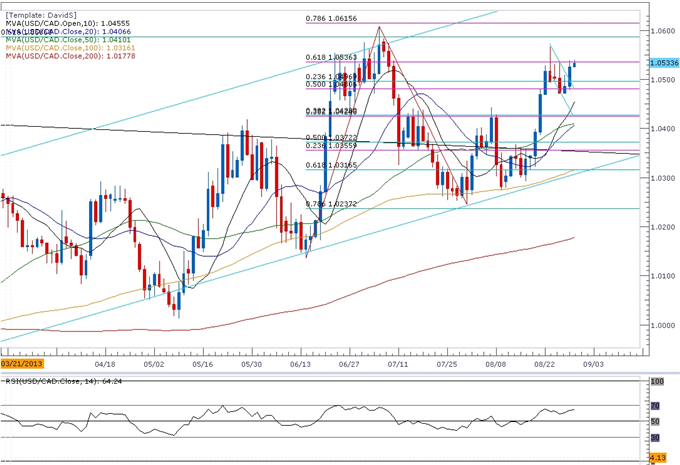
- Upward trending channel calls for higher high; bullish flag formation in focus
- Soft resistance at 1.0540-50, 61.8% expansion; close above brings 78.6% Fib expansion on radar
- Relative Strength Index approaching overbought territory
- Former resistance (1.0420-30, 38.2% retracement) seen as new support
Impact that the Gross Domestic Product report has had on CAD during the last quarter
Period
|
Data Released
|
Estimate
|
Actual
|
Pips Change
(1 Hour post event )
|
Pips Change
(End of Day post event)
|
1Q 2013
|
05/31/2013 12:30 GMT
|
2.3%
|
2.5%
|
+12
|
+36
|
1Q 2013 Canada Gross Domestic Product
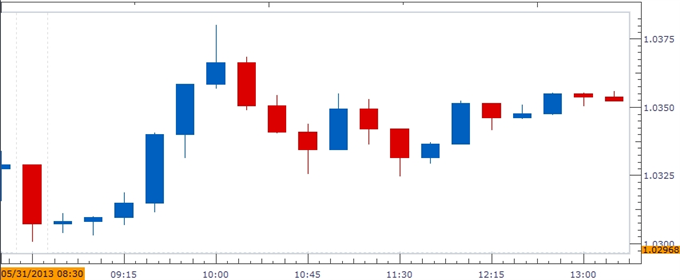
The Canadian economy grew another 2.5% in the first quarter to mark the fastest pace of growth since 2011, and the pickup in GDP may encourage the Bank of Canada to adopt a more hawkish tone for monetary policy as the central bank looks to avert an asset bubble. Despite the better-than-expected print, the initial decline in the USDCAD was short-lived, and the Canadian dollar continued to lose ground throughout the North American trade as the pair closed at 1.0364.
Source: http://dld.bz/cNTez


